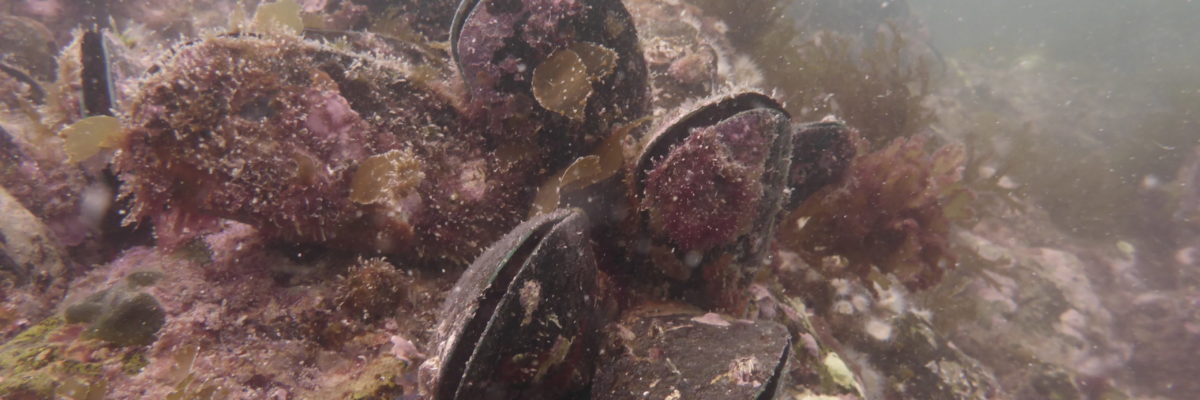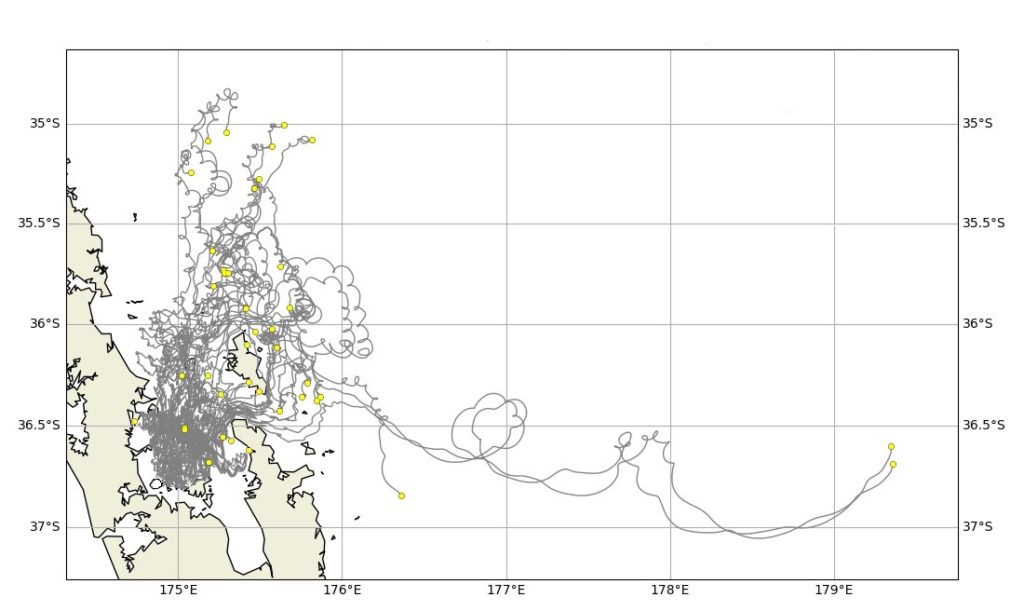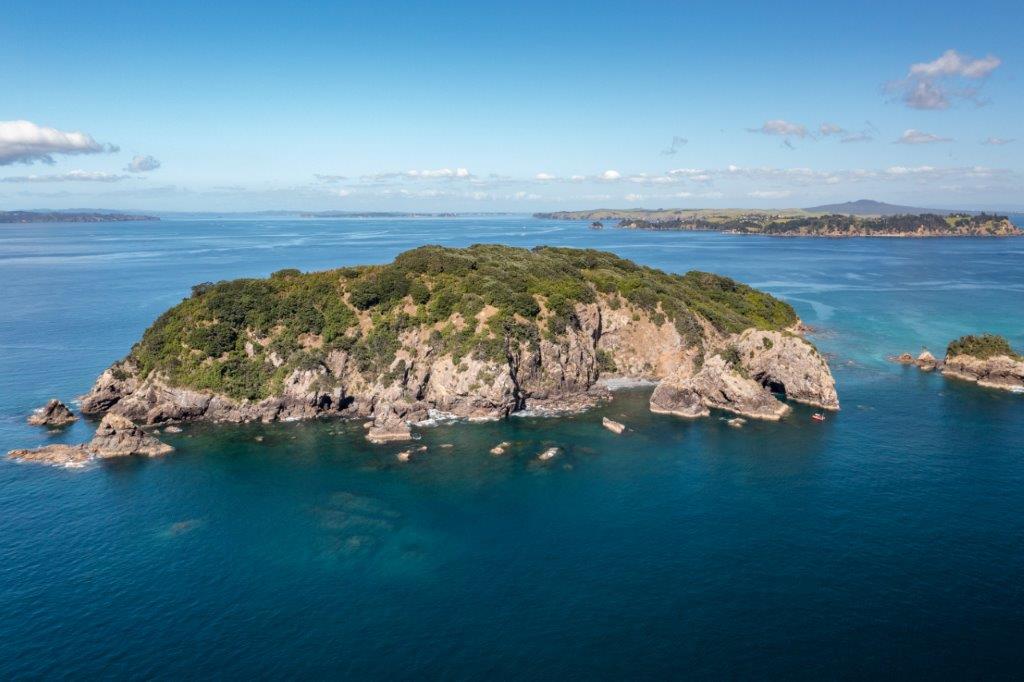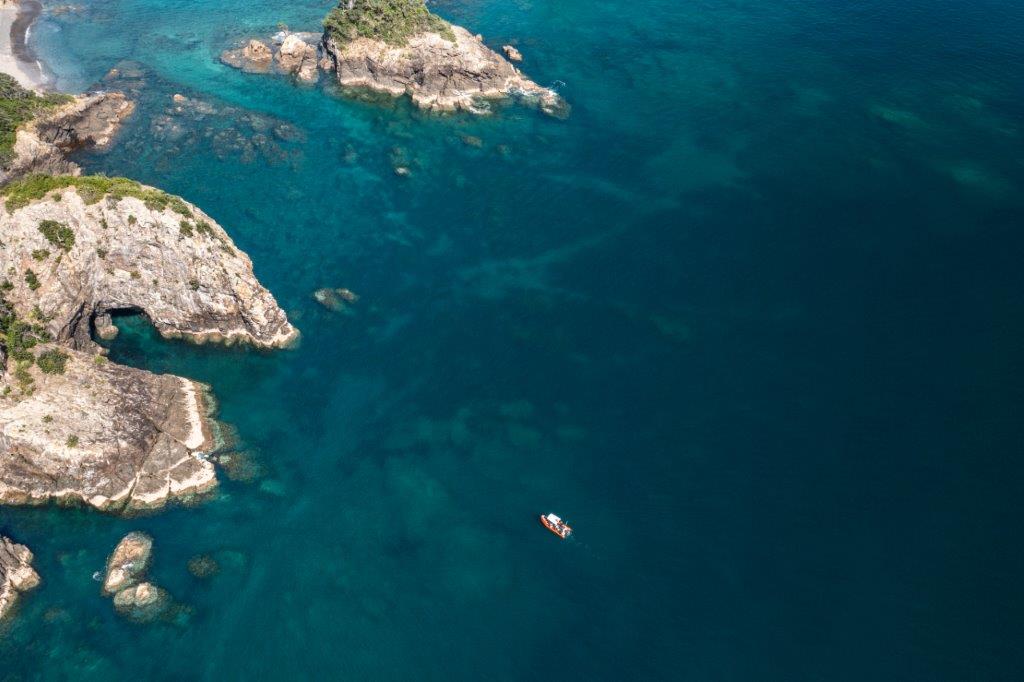The Noises hold a very special interest for seabird lovers. Being home to at least…

The unseen benefits of going with the flow
The Moana Project investigates larval dispersal of kūtai (green-lipped mussel).
The Moana Project is a five-year Endeavour Fund ocean research initiative funded by The Ministry of Business, Innovation and Employment (MBIE) and its aim is to improve our understanding of coastal ocean circulation, connectivity, and marine heatwaves. With a budget of $11.5million, the project is working with research organisations in New Zealand and around the world with the intention of changing the way we understand and view our oceans.
Of interest for The Noises, The Moana Project has been investigating larval dispersal of kūtai or green-lipped mussels around The Noises where one of the few remaining wild kūtai beds can be found. Because the majority of the Gulf’s mussel beds have been depleted over the last century, this loss has had devastating effects on the wider marine environment because mussels play so many vital roles in the ecosystem, from providing nursery habitats to filtering impurities from the water, as well as their importance as kaimoana.
Using particle tracking software, The Moana Project simulated the dispersal of 50 kūtai larvae from The Noises and the results showed how quickly and how far the larvae spread, demonstrating how vital it is that we protect this population to aid wider restoration.
Moana Project team member, Professor Andrew Jeffs is very clear that maintaining a large healthy breeding population of marine organisms at The Noises is important, in order to assist in replenishment of other areas of Tīkapa Moana that may be depleted.

The figure shows the extent of the dispersal tracks of just 50 green-lipped mussel larvae released across the reefs of the Noises Island on the first day of October in 2017 and then followed over the next 31 days. From the dispersal tracks, it is clear that the larvae are dispersed all over the Hauraki Gulf and beyond, within the normal period the larvae would spend developing in the water column before they settle.”
Andrew continues: “This is for just 50 larvae, whereas a female adult mussel will spawn millions of eggs at a time. It is not only mussels that have this kind of larval dispersal either, most other coastal species in New Zealand have similar patterns of larval dispersal, including scallops, oysters, swimming crabs, snapper, kingfish, and flounder. Recent research at the Leigh Marine Reserve has confirmed the importance of marine protected areas for replenishing adjacent coastlines. At least 11% of juvenile snapper up to 40 km away from the Leigh Reserve were found to be the offspring of spawning adults from the reserve.”
To read more about The Moana Project’s fascinating mussel dispersal investigations go to: www.moanaproject.org/news/moana-backbone-model-supports-unique-islands-in-the-hauraki-gulf



